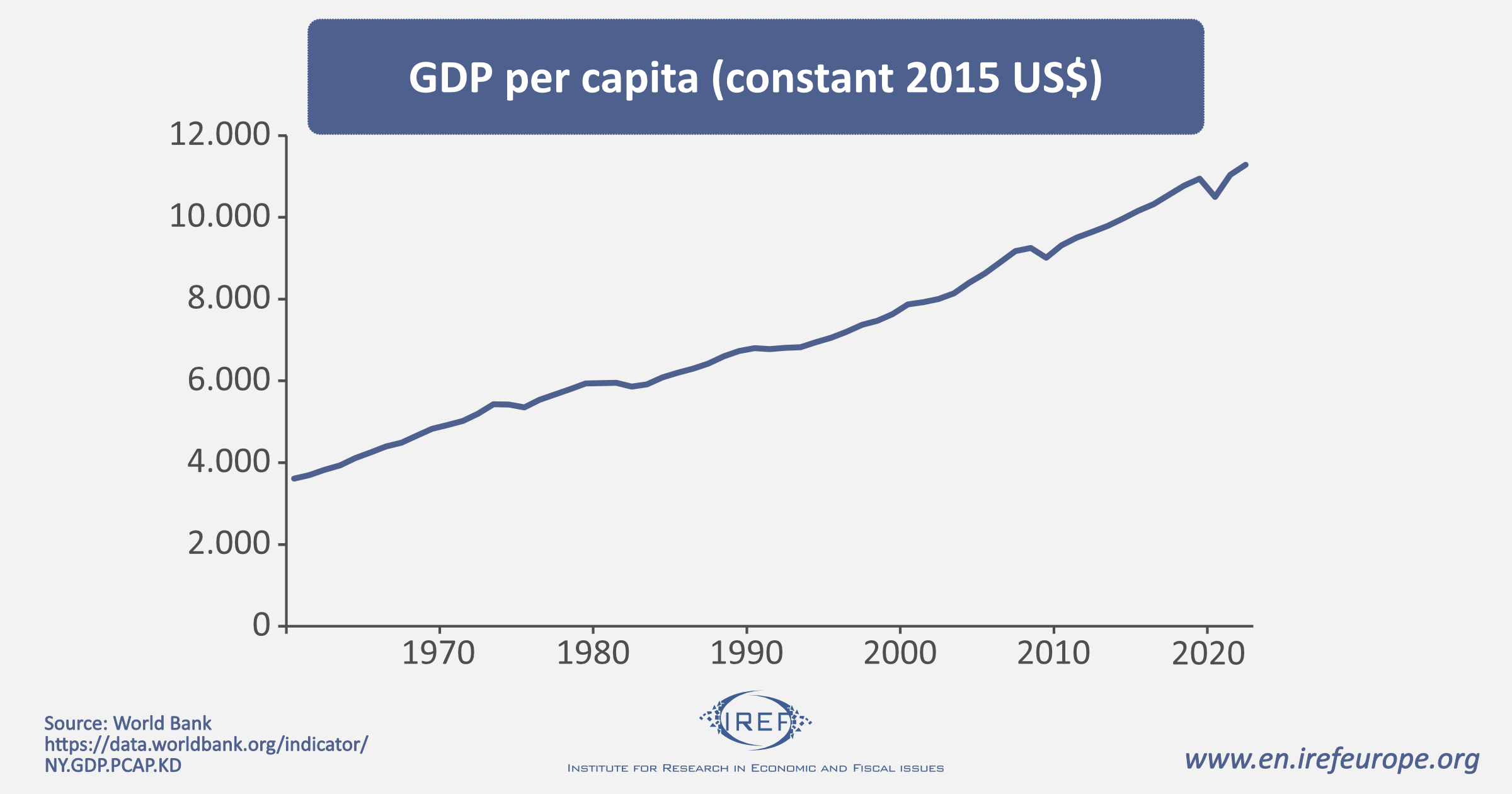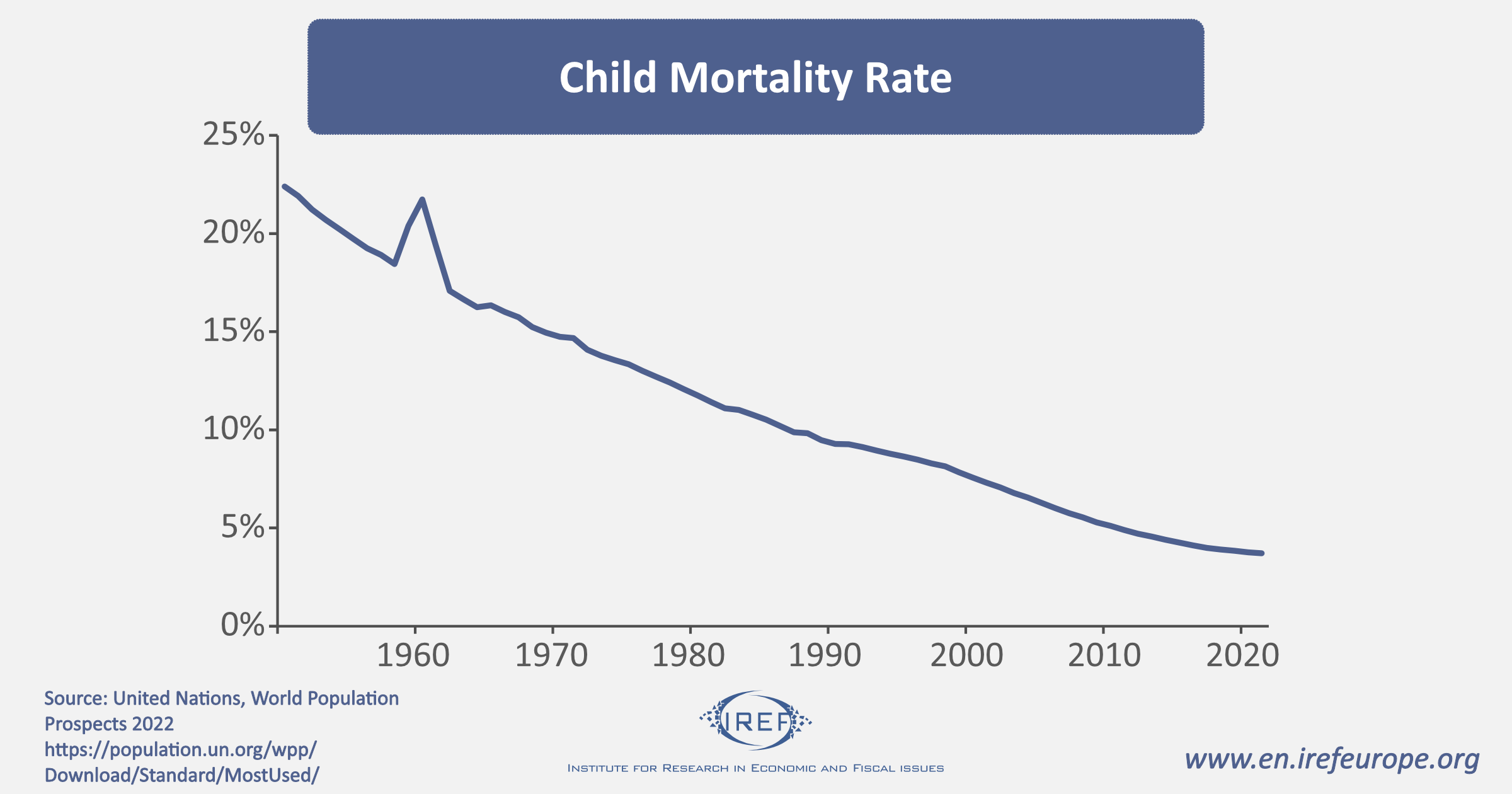La Niña has gone, and El Niño is back. They are natural phenomena originating in the Pacific Ocean and affect the weather all around the world. La Niña cools global average surface temperature, while El Niño has the opposite effect.
June 2023 was the warmest month and July 7th probably the hottest single day so far measured by humans. And the next few months could set new top temperatures. Present global temperature is around 1.46C above the typical temperatures in the preindustrial era (1850-1899).
The goal of the 2015 Paris Agreement on climate change is to hold “the increase in the global average temperature to well below 2 °C above pre-industrial levels” and pursue efforts “to limit the temperature increase to 1.5 °C above pre-industrial levels” over a 30-year period.
Many believe that this threshold must not be exceeded, whatever it takes. Après les 1.5°C le déluge. But this is at odds with reality and with climate science itself. A “1.6 °C” warmer world is by no means much different from the present one. And the present one is not too bad, after all.
The 2022 United Nations’ “World Population Prospect” considers world life expectancy. The news is good. After declining for the first time in decades due to the pandemic, this year a new record will be set. On average, a child born in 2023 can hope to live until 73.4 years, 27 years more than his grandfather born in 1950.

In brief, we have never lived so long, and we have never been so rich. In 2022 the world per capita GDP has been 11.300$, three times more than in 1960.

Another piece of good news comes from the FAO: “the new forecast for global cereal production in 2023 has been raised by 5.9 million tonnes (0.2 percent) in July from the previous month, now standing at 2,819 million tonnes, 1.1 percent higher year on year and reaching a record high.”
Child mortality (the share of newborns who die before reaching the age of five) has never been so low: it was 22.4% in 1950 and 3.71% in 2021. The risk of dying due to an extreme event is now 90% lower than a century ago.

Obviously, much remains to be done. For example, in 2020, 4.3% of the world’s children died before reaching 15 years of age. Nonetheless, as the late Julian Simon said in the 90’s “the material conditions of life will continue to get better for most people, in most countries, most of the time, indefinitely. Within a century or two, all nations and most of humanity will be at or above today’s Western living standards.” And also: “I speculate, however, that many people will continue to think and say that the conditions of life are getting worse.” Spot on: according to a scientific study on climate anxiety and young people, four in ten among them are “hesitant to have children” due to climate change, and seven in ten think that “the future is frightening.” They are clearly badly misinformed. They should follow the science, not the news.
Brian O’Neill, a scientist of the IPCC (Intergovernmental Panel on Climate Change), describes our future as follows: “One thing to make very clear is that all the paths, even the hottest ones, show improvements in human well-being on average. IPCC scientists expect that average life expectancy will continue to rise, that poverty and hunger rates will continue to decline, and that average incomes will go up in every single plausible future, simply because they always have. There is not, you know, like a Mad Max scenario among the SSPs1. Climate change will ruin individual lives and kill individual people, and it may even drag down rates of improvement in human well-being, but on average we are generally in the climate-change field not talking about futures that are worse than today.” It has to be noted that at present the hottest scenarios are highly unlikely.
The negative effects of climate change will worsen (more heat waves, more flooding and a higher sea level than today) but, to a considerable extent, we shall be able to cope with them thanks to adaptation. This is what science says, but the media usually ignore.
An efficient emission reduction is also in many cases worthwhile. We will be better off if the avoided damage is larger than the cost of mitigation. Better said: our heirs will gain more than what we lose now because of more expensive and less reliable energy. Not every form of mitigation is desirable. The best thing we could do for the climate would be to instantly stop all the emissions in the world. Obviously, it would be a catastrophe. In the 2020, due to covid-19 and to policies put in place to limit its impact, world GDP fell by 3.2%. CO2 emissions dropped significantly for the first time and the number of people living in extreme poverty that fell from 1.8 billion to 650 million people in the previous twenty years rose to 766 million.
Indeed, economic growth matters, because the greater our wealth, the greater our ability to adapt. In the US, air conditioning led to a reduction in hot day–related fatalities by 75%. In the Netherlands, four million people currently live below mean sea level. There is a plan to make Manhattan bigger to deal both with housing costs and storms due to climate change. That could make sense, but we should not forget that similar solutions would be a waste of resource in less populated areas and poor countries where adaptation would be too expensive. A hurricane is much more devastating in Haiti than in Florida, and so on.
To sum up: mitigating emissions is essential, but economic (and demographic) growth is important as well.
1 Shared Socioeconomic Pathways (SSPs) are scenarios of projected socioeconomic global changes up to 2100. They are used to derive greenhouse gas emissions scenarios with different climate policies.


